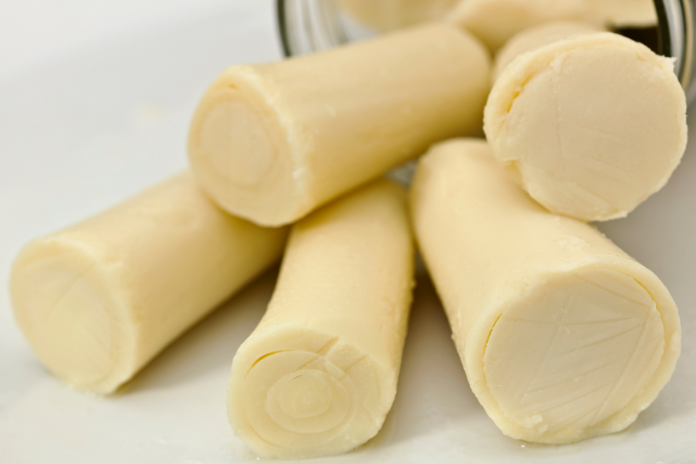The heart of palm is a whitish vegetable that grows in the cores of some palm palms. It is also known as palm hearts, chap cabbage, palmito, chonta, and marsh cabbage. It grows in humid and tropical climates such as Costa Rica and the Amazon.
Fresh palm hearts are rarely consumed. Due to its perishability, even in areas where it is grown, the vegetable is generally boiled and filtered before consumption.
Nutrition
A 100 gram raw serving of hearts of palm contains:
- Potassium– 38% of the Daily Value (DV)
- Phosphorus– 20% of the DV
- Copper- 70% of the DV
- Zinc– 36% of the DV
- Calories- 36
- Protein- 4 grams
- Fat- less than 1 gram
- Carbs- 4 grams
- Fiber- 4 grams

7 Amazing Health Benefits of Heart of Palm
Improves Blood Sugar Control
Getting adequate fiber not only benefits your heart but also helps to keep your blood sugar levels in check. Non-starchy vegetables, such as hearts of palm, are beneficial in the treatment of diabetes.
Carbohydrates rich in starch and sugar are mostly to blame for high blood sugar levels. Over a period, chronically elevated blood sugar damages all organ systems. Hearts of palm are an uncooked food high in fiber that helps regulate blood sugar levels.
Helps Prevent Anemia
Palm hearts are a good source of iron and vitamin c. Combining vitamin c with iron-rich plant meals is a critical method to enhance iron absorption. It avoids anemia for vegetarians or anybody who is limiting their meat diet.
Iron deficiency anemia affects pregnant women, women of childbearing age, and small children, in contrast to vegetarians. This danger can be reduced by adding the heart of palm to your meal.
Weight Loss
Vegetables are one food item that most experts believe can help you lose weight if you consume more of them. Because of their high fiber and water content, non-starchy veggies like hearts of palm are very good for weight loss.
Non-starchy veggies provide fewer calories per unit of food than starchy vegetables, increasing satiety and lowering overall food consumption. To attain long healthy weight control, include heart of palm in your weight loss regimen.
High in antioxidants
Plant components such as polyphenol antioxidants abound in the heart of palm. These chemicals scavenge free radicals. These are unstable molecules that can cause oxidative harm in your body if their levels become too high. Numerous illnesses have been related to oxidative damage. As a result, antioxidants may lower your chance of developing diseases including cancer, diabetes, and heart disease. Polyphenol-rich diets are also linked to decreased inflammation, which is considered to play a role in many of these illnesses.
Keto compatibility
Heart of palm may be safely incorporated into the keto diet due to its low carb level. This low-carb, rising diet may help you lose weight by urging your body to use fat for energy instead of carbohydrates. Around 2 grams of carbohydrates are present in a normal 2-ounce meal of this vegetable. Given that the keto diet limits carb intake to 50 grammes per day, a serving of heart of palm would only account for 4% of your daily carb allotment.
However, because the carb amount varies according to the brand, it’s critical to check the nutrition label when purchasing a heart of palm.
Heart Health
Heart health requires a lot of fiber, and heart of palm is a wonderful source of it. Hearts of palm contain approximately 2 grams of fiber per serving. It might help you get nearer to the minimum fiber intake of 21–38 grams. Fiber has been shown to assist in the reduction of blood pressure and cholesterol. While preserved hearts of palm frequently include sodium, you may get salt-free versions. Moreover, potassium in palm hearts helps to decrease blood pressure by counteracting the effects of salt.
Enhance Brain Function
Malnutrition is more common among the elderly owing to a range of reasons. Including a decrease in appetite and reduced availability to a variety of meals. This can lead to nutritional shortages that go undiagnosed, contributing to cognitive deterioration. Vitamin B6 is one such essential.
The majority of individuals obtain enough of this vitamin. However, numerous studies show a link between low B6 levels and decreased brain function in elders. Hearts of palm are a simple method to boost your vitamin B6 consumption through your food.
How to Use Heart of Palm?
They can be eaten straight from the container or can, chopped or cubed. It can be added to veggie or grain combinations, or enveloped in pancetta or ham and served as a snack or appetizer.
Palm hearts are a wonderful meat alternative in vegan or vegan diets. They are strong in fiber, high in protein, and have a moderate taste. Rather than seafood, use hearts of palm recipes like vegan pastrami and guacamole.
Conclusion
Heart of palm is a whitish vegetable that grows on palm trees. It’s used in dressings and sauces, and it’s also a famous vegan meat substitute. Its high mineral and antioxidant content may provide numerous health advantages. Including illness prevention and weight loss. Because canned or jarred versions are readily available, you may begin incorporating this novel food into your diet right now.
References
https://pubmed.ncbi.nlm.nih.gov/29842962/
https://www.foodandwine.com/cooking-techniques/